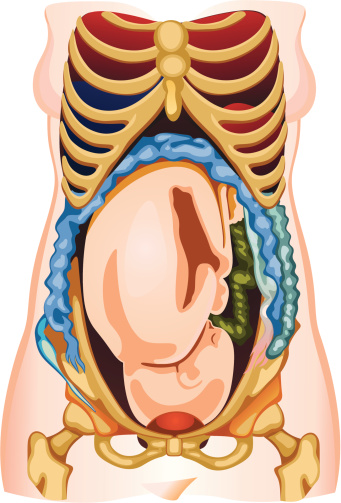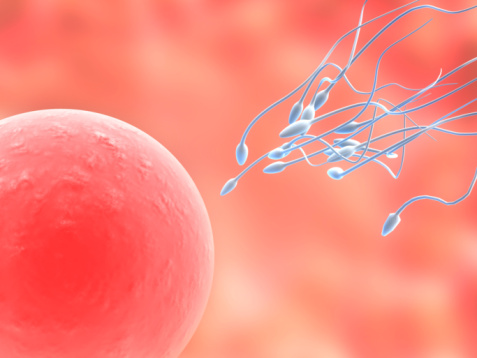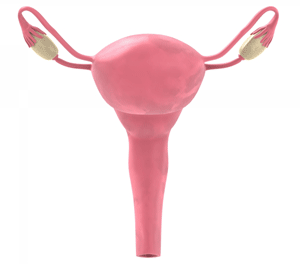 The overall strategy of drug therapy for female infertility is to produce a mature follicle of the ovaries, stimulate ovulation, provide sufficient production of cervical mucus, control endometriosis, and reduce excessive prolactin levels.
The overall strategy of drug therapy for female infertility is to produce a mature follicle of the ovaries, stimulate ovulation, provide sufficient production of cervical mucus, control endometriosis, and reduce excessive prolactin levels.
Clomiphene (Clomid, Milophene, Serophene) promotes follicular maturation and ovulation by blocking receptors for estrogen. This causes the pituitary to increase secretion of LH and FSH to stimulate the ovary to produce ovulation and follicular maturation. Common side effects include nausea, abdominal pain, bloating, hot flashes, and mammary pain. Some women even experience visual disturbances as well. Multiple births occur in 8% to 10% of women who choose this type of therapy. Ovarian hyperstimulation is rare. This drug should be avoided during pregnancy.
Menotropins (Pergonal, Repronex, Menopur, human menopausal gonadotropin) have equal amounts of LH and FSH and are used with HCG for follicular maturation and ovulation. Side effects include overstimulation of the ovaries. These medications also can cause spontaneous abortion or multiple births. Monitoring this kind of therapy includes checking ovarian responses to determine the timing of administration and measuring estrogen levels.
Follitropins, including urofollitropin (Metrodin, Fertinex, Bravelle), follitropin alfa (Gonal-F), and follitropin beta (Follistim), are preparations of FSH. It is used in women to act directly on the ovary to stimulate follicle maturation. The use in men has been approved for promoting spermatogenesis in males with primary or secondary hypogonadotropic hypogonadism.
Lutropin alfa (Luveris) is a recombinant form of LH and has been approved for combined use with follitropin alfa to promote follicular maturation in infertile, hypogonadotropic, and hypogonadal women with profound LH deficiency.
Human chorionic gonadotropin (hCG), like LH, promotes follicular maturation and induces ovulation. Adverse effects include ovarian hyperstimulation syndrome requiring hospitalization and discontinuation of HCG, rupture of ovarian cysts, multiple births, edema, pain at injection site, and CNS disturbances.
Choriogonadotropin alfa (Ovidrel) is a form of hCG produced by recombinant DNA technology.
Gonadotropin-releasing hormone antagonists (GnRH) can be used to prevent a premature surge of endogenous LH in women undergoing controlled ovarian stimulation.
Two dopamine agonists, cabergoline (Dostinex) and bromocriptine (Parlodel), are approved for hyperprolactinemia. Cabergoline is better tolerated and is more convenient than bromocriptine is.
As a GnRH agonist, Leuprolide (Lupron Depot) is indicated for uterine fibroids, central precocious puberty, and advanced prostate cancer; endometriosis; and suppressed endometriosis by indirectly suppressing ovarian hormone production. Common adverse effects are hot flashes, vaginal dryness, decreased libido, mood changes, and headache. The most concerning adverse effect is bone loss. The drug is given IM once a month, or every three months.
 Oral contraceptives, or birth control pills, simulate a hormonal state that mimics pregnancy. If the human body thinks that it is pregnant, it will not ovulate and release an egg to be fertilized. These medications are 99% effective if taken exactly as prescribed at the same time every day. Oral contraceptives are available in four different categories: monophasic, biphasic, triphasic, and progestin-only. Monophasic oral contraceptives have fixed doses of progestin and estrogen in each tablet. Biphasic birth control pills have two phases of hormones in each monthly pack. The first phase contains fixed doses of a progestin and an estrogen, while the second phase provides an increased dose of progestin, but the same dose of estrogen. Similarly, triphasic oral contraceptives have three phases in each monthly prescription. Just like the others, the first phase provides fixed doses of a progestin and an estrogen. In the second phase, either one or both of the hormones increases in each tablet. In the third and final phase, either one or both of the hormones increases or decreases in each tablet. Finally, the progestin-only birth control pills only contain a progestin, such as norethindrone or norgestrel.
Oral contraceptives, or birth control pills, simulate a hormonal state that mimics pregnancy. If the human body thinks that it is pregnant, it will not ovulate and release an egg to be fertilized. These medications are 99% effective if taken exactly as prescribed at the same time every day. Oral contraceptives are available in four different categories: monophasic, biphasic, triphasic, and progestin-only. Monophasic oral contraceptives have fixed doses of progestin and estrogen in each tablet. Biphasic birth control pills have two phases of hormones in each monthly pack. The first phase contains fixed doses of a progestin and an estrogen, while the second phase provides an increased dose of progestin, but the same dose of estrogen. Similarly, triphasic oral contraceptives have three phases in each monthly prescription. Just like the others, the first phase provides fixed doses of a progestin and an estrogen. In the second phase, either one or both of the hormones increases in each tablet. In the third and final phase, either one or both of the hormones increases or decreases in each tablet. Finally, the progestin-only birth control pills only contain a progestin, such as norethindrone or norgestrel.
 The overall strategy of drug therapy for female infertility is to produce a mature follicle of the ovaries, stimulate ovulation, provide sufficient production of cervical mucus, control endometriosis, and reduce excessive prolactin levels.
The overall strategy of drug therapy for female infertility is to produce a mature follicle of the ovaries, stimulate ovulation, provide sufficient production of cervical mucus, control endometriosis, and reduce excessive prolactin levels.